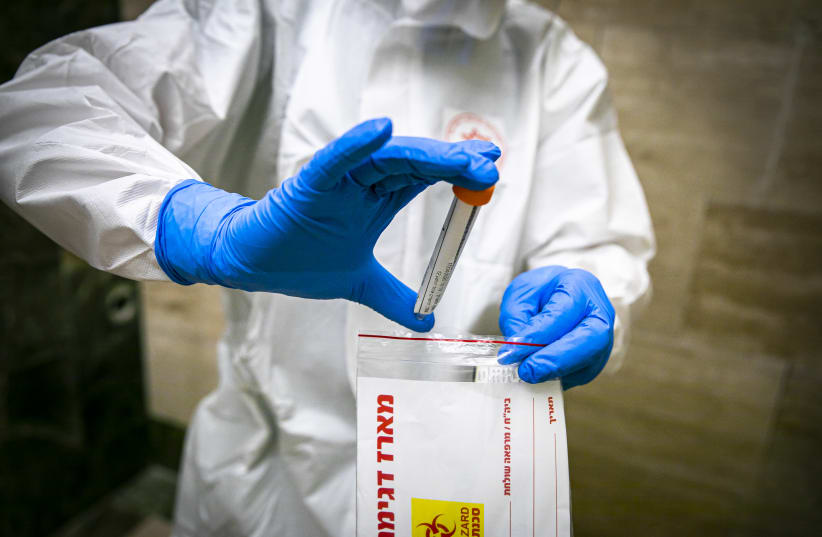Prof. Jonathan Gershoni from Tel Aviv University's (TAU) School of Molecular Cell Biology and Biotechnology claimed on Sunday that work his laboratory is doing on the corona family of viruses is "two-thirds of the way" through the process of developing a vaccine for COVID-19.
Even so, a vaccine would still take more than a year to develop, he said.Gershoni, who has studied the family of viruses for 15 years, said that he was recently granted a patent by the United States Patent and Trademark Office for his vaccine design. He explained that the vaccine intends to target the virus's Receptor Binding Motif (RBM), a critical weak point which allows the virus to attach itself and infect a target cell.
The RBM is a small feature of the virus's "spike" protein, meaning that the virus uses many different proteins to replicate and invade cells, but the "spike" protein is the "major surface protein that it uses to bind to a receptor – another protein that acts like a doorway into a human cell," according to TAU.

Once this protein binds to the cell receptor of a human cell, the viral membrane fuses with that of the human cell, which allows the genome, or genetic blueprint of the virus to enter human cells and begin infection.
"The idea is to recreate, to reconstitute, to construct an RBM of COVID-19 virus and use it as the vaccine," he told the Post. "That is to say, you would inject a small 50 amino-acid sequence and it would allow our immune system to focus on it and create antibodies that would directly target the virus at its weak spot."
Due to the size of the RBM, which is a highly complex three-dimensional structure and only 50 amino acids long, it will be very challenging for it to be functionally reconstituted. It would, however, be extremely effective as a basis for a possible vaccine.
"The smaller the target and the focus of the attack, the greater the effectiveness of the vaccine," Gershoni said. "The virus takes far reaching measures to hide its RBM from the human immune system, but the best way to 'win the war' is to develop a vaccine that specifically targets the virus’s RBM."
Gershoni originally developed the design of the vaccine which targets the RBM in response to SARS CoV, which broke out in 2004, and later for MERS CoV. "What we found was that we were able to reconstitute, to create a functional Receptor Binding Motif, and that's when we filed for patent in 2015," he explained to the Post.
"We are now currently working on implementing the design of the vaccine that we were able to construct for SARS and MERS and to apply it to the current virus, the SARS coronavirus 2," he continued. "This is a multi-step process. We've completed, I would say, about two-thirds of the way."
The first thing his research team needed was the "genetic blueprint of the entire virus," which, when published in early January, allowed them to identify the RBM.
Gershoni then had to "construct various variations of the RBM, and we are now currently in the process of screening to identify the RBM which is most similar to the natural, the RBM of the virus, which therefore would constitute a functional vaccine."
The professor recently received serum samples which may allow him and his associates to "isolate RBM-based vaccine candidates in the next month or two.
"The discovery and production of a functional RBM for the new coronavirus is fundamental and critical for the production of the vaccine we propose."
If successful, Gershoni will be able to isolate and reconstitute a functional RBM, which would allow the industry to "incorporate it into a vaccine, which will be produced by a pharmaceutical company. Development of such an RBM-based vaccine should take months and then would need to be tested in Phase 1, 2 and 3 clinical trials, which would then take up to a year."
